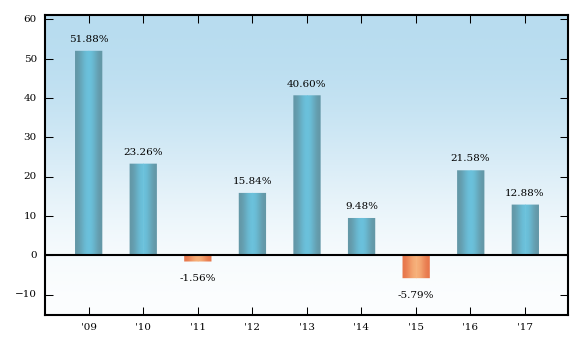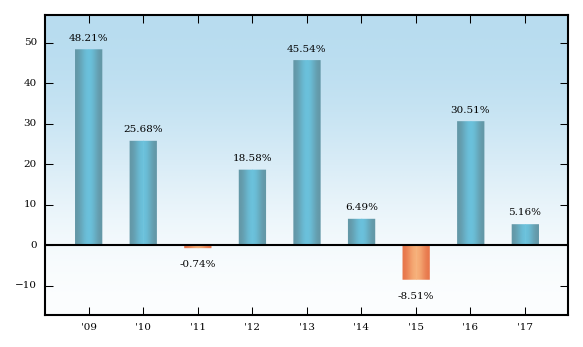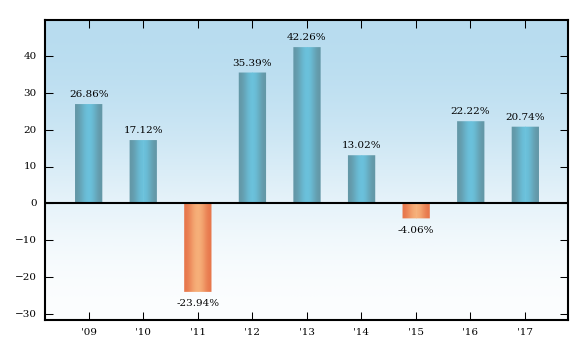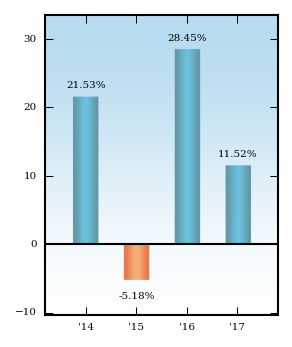| Oppenheimer ESG Revenue ETF | ||||||||||||||||||||||||||||||
| <b>Oppenheimer ESG Revenue ETF </b> | ||||||||||||||||||||||||||||||
| <b>Investment Objective.</b> | ||||||||||||||||||||||||||||||
| Oppenheimer ESG Revenue ETF (the “Fund”) seeks to provide investment results that correspond generally, before fees and expenses, to the performance of the OFI Revenue Weighted ESG Index™ (the “Underlying Index”). | ||||||||||||||||||||||||||||||
| <b>Fees and Expenses.</b> | ||||||||||||||||||||||||||||||
| The following table describes the fees and expenses you may pay if you buy and hold shares of the Fund (“Shares”). You may also incur customary brokerage charges when buying or selling Fund Shares. | ||||||||||||||||||||||||||||||
| <b>Annual Fund Operating Expenses</b><br/> (expenses that you pay each year as a percentage of the value of your investment) | ||||||||||||||||||||||||||||||
| ||||||||||||||||||||||||||||||
| <b>Example.</b> | ||||||||||||||||||||||||||||||
| The following example is intended to help you compare the cost of investing in the Fund with the cost of investing in other funds. The example assumes that you invest $10,000 in the Fund for the time periods indicated and then redeem all of the Shares at the end of those periods. This example assumes that the Fund provides a return of 5% a year and that operating expenses remain the same. This example does not include the brokerage commission that you may pay to buy and sell exchange-traded Shares of the Fund. Although your actual costs may be higher or lower, based on these assumptions, your costs would be: | ||||||||||||||||||||||||||||||
| ||||||||||||||||||||||||||||||
| <b>Portfolio Turnover.</b> | ||||||||||||||||||||||||||||||
| The Fund pays transaction costs, such as commissions, when it buys and sells securities or other instruments. A higher portfolio turnover rate may indicate higher transaction costs and may result in higher taxes when Shares are held in a taxable account. These costs, which are not reflected in annual Fund operating expenses or in the example, affect the Fund’s performance. During the most recent fiscal year, the Fund’s portfolio turnover rate was 26.95% of the average value of its portfolio. | ||||||||||||||||||||||||||||||
| <b>Principal Investment Strategies.</b> | ||||||||||||||||||||||||||||||
| The Fund seeks investment results that correspond generally, before fees and expenses, to the performance of the Underlying Index. Under normal circumstances, the Fund will invest at least 80% of its net assets, plus any borrowings for investment purposes, in the securities of companies included in the Underlying Index and generally expects to be substantially invested at such times, with at least 95% of its net assets invested in these securities. The Fund may invest up to 20% of its assets in certain index futures, options, options on index futures, swap contracts or other derivatives, as related to its Underlying Index and its component securities, other securities not included in the Underlying Index and cash and cash equivalents, including shares of money market funds advised by the investment adviser or its affiliates, to the extent the investment adviser believes such investments will help the Fund track the Underlying Index. The Underlying Index is constructed using a rules based methodology to select companies from within the S&P 500® Index (the “Parent Index”) that have strong environmental, social and governance (“ESG”) practices, and then re-weight those companies according to the revenue earned, subject to a maximum 5% per company weighting. The Underlying Index is reconstituted and rebalanced quarterly. The Underlying Index is constructed using a scoring system established by Sustainalytics, a third party research provider, to measure the strength of each pillar of environmental, social, and governance practices for each company within the Parent Index. Based on that scoring, the top half of companies with an ESG score, excluding those with a detrimental score for controversies, are selected for inclusion in the Underlying Index, and those that are selected are then re-weighted according to revenue earned. The Underlying Index thus contains a subset of the securities in the Parent Index, in different proportions. As of August 31, 2018, the Underlying Index contained 233 securities. The Fund’s intention is to replicate the constituent securities of the Underlying Index as closely as possible, and the investment adviser uses a “passive” or indexing approach to try to achieve the Fund’s investment objective. When a replication strategy could have adverse consequences to Fund shareholders, however, the Fund may utilize a “representative sampling” strategy whereby the Fund would hold a significant number of the component securities of the Underlying Index, but may not track that Underlying Index with the same degree of accuracy as would an investment vehicle replicating the entire Underlying Index. The Fund does not try to outperform the index it tracks and does not seek temporary defensive positions when markets decline or appear overvalued. The Fund will typically concentrate in investments in a particular industry or group of industries to approximately the same extent that its Underlying Index is concentrated, meaning that it may invest more than 25% of its net assets in that industry or group of industries. The Underlying Index is calculated and maintained by S&P Dow Jones Indices (the “Index Provider”), which is unaffiliated with the Fund and the investment adviser. The Index Provider determines the composition and relative weightings of the securities in the Underlying Index and publishes information regarding the market value of the Underlying Index. Since the Manager owns the Underlying Index, it may be deemed a creator and sponsor of the Underlying Index. The Fund may lend securities representing up to one-third of the value of the Fund’s total assets (including the value of any collateral received). | ||||||||||||||||||||||||||||||
| <b>Principal Risks.</b> | ||||||||||||||||||||||||||||||
| Like all investments, investing in the Fund entails risks, including the risk that you may lose part or all of the money you invest. Investment Approach Risk. The Underlying Index, and thus the Fund, seeks to provide exposure to investments based on a specific selection criteria and a revenue weighting approach. There can be no assurance that the selection criteria and weighting approach will enhance the Fund’s performance over time. It is expected that exposure to such investment criteria and weighting will detract from performance in some market environments, perhaps for extended periods. In such circumstances, the Fund’s investment adviser will not adjust the Fund’s investment process to target different criteria or weighting processes. ESG Investing Strategy Risk. The stocks of companies with favorable ESG practices may underperform the stock market as a whole. As a result, the Fund may underperform other funds that do not screen companies based on ESG practices. The criteria used to select companies for the Underlying Index may result in the Fund investing in securities, industries or sectors that underperform the market as a whole or underperform other funds screened for ESG standards. Stock Market Risk. Stock market risk is the risk that broad movements in financial markets will adversely affect the price of the Fund’s investments, regardless of how well the companies in which the Fund invests perform. There is also a risk that the price of one or more of the securities or other instruments in the Fund’s portfolio will fall. Concentration Risk. The Fund will typically concentrate in industries or groups of industries to approximately the same extent as its Underlying Index. The Fund may be adversely affected by the performance of the securities in a particular industry or group of industries and may be subject to increased price volatility and may be more susceptible to adverse economic, market, political or regulatory occurrences affecting that market, industry, group of industries, sector or asset class than may be the case for a fund that was not concentrated in a particular industry or group of industries. Consumer Discretionary Sector Risk. The success of consumer product manufacturers and retailers is tied closely to the performance of the overall global economy, interest rates, competition and consumer confidence. Success depends heavily on disposable household income and consumer spending. Also, companies in the consumer discretionary sector may be subject to severe competition, which may have an adverse impact on their respective profitability. Changes in demographics and consumer tastes can also affect the demand for, and success of, consumer products and services in the marketplace. Consumer Staples Sector Risk. Consumer staples are essential products, such as food, beverages, household items, tobacco and other goods that people are unable or unwilling to cut out of their budgets regardless of their financial situation.The consumer staples sector may be affected by the regulation of various product components and production methods, new laws, regulations or litigation, marketing campaigns and other factors affecting consumer demand. The consumer staples sector may also be adversely affected by changes or trends in commodity prices, which may be influenced by unpredictable factors. The demand for consumer staples goods remains fairly constant regardless of the state of the economy. With some products, such as food, alcohol and tobacco, demand sometimes increases during economic downturns. However, price competition among suppliers may be very challenging, which can drive prices lower and impact returns. Healthcare Sector Risk. The healthcare sector includes companies relating to medical and healthcare goods and services, such as companies engaged in manufacturing medical equipment, supplies and pharmaceuticals, as well as operating healthcare facilities and the provision of managed healthcare. Companies in this sector may be affected by government regulations and government healthcare programs, increases or decreases in the cost of medical products and services and product liability claims, among other factors. Many healthcare companies are heavily dependent on patent protection, and the expiration of a company’s patent may adversely affect that company’s profitability. Healthcare companies are subject to competitive forces that may result in price discounting, and may be thinly capitalized and susceptible to product obsolescence. Industrials Sector Risk. The industrials sector includes companies engaged in the manufacture and distribution of capital goods, such as those used in defense, construction and engineering, companies that manufacture and distribute electrical equipment and industrial machinery and those that provide commercial and transportation services and supplies. Companies in the industrials sector may be adversely affected by changes in government regulation, world events and economic conditions. In addition, companies in the industrials sector may be adversely affected by environmental damages, product liability claims and exchange rates. Information Technology Sector Risk. The information technology sector includes companies engaged in developing software and providing data processing and outsourced services, along with manufacturing and distributing communications equipment, computers and other electronic equipment and instruments, and semiconductors and semiconductor equipment manufacturers. Information technology companies are particularly vulnerable to federal, state and local government regulation, and competition and consolidation, both domestically and internationally, including competition from foreign competitors with lower production costs. Information technology companies also face competition for services of qualified personnel. Additionally, information technology companies face rapid technological development and frequent new product introduction by competitors. Information technology companies typically rely on patents and intellectual property rights. Authorized Participant Concentration Risk. Only an authorized participant may engage in creation or redemption transactions directly with the Fund. The Fund has a limited number of intermediaries that act as authorized participants and none of these authorized participants is or will be obligated to engage in creation or redemption transactions. To the extent that these intermediaries exit the business or are unable to or choose not to proceed with creation and/or redemption orders with respect to the Fund and no other authorized participant is able to step forward to create or redeem Shares, Shares may trade at a discount to net asset value (“NAV”), and the Fund may possibly face delisting. In addition, there are a limited number of financial institutions that may act as authorized participants that post collateral for certain transactions, such as creation and redemption orders that are processed outside of the National Securities Clearing Corporation’s system. To the extent those authorized participants exit the business or are unable to process creation or redemption orders and no other authorized participant is able to step forward to do so, there may be a significantly diminished trading market for Shares. This could also lead to differences between the market price of Shares and their underlying value. Operational Risk. The Fund is exposed to operational risks arising from a number of factors, including, but not limited to, human error, processing and communication errors, errors of the Fund’s service providers, counterparties or other third-parties, failed or inadequate processes and technology or systems failures. The Fund and the investment adviser seek to reduce these operational risks through controls and procedures. However, these measures do not address every possible risk and may be inadequate to address these risks. Risks Relating to Calculation of NAV. The Fund relies on various third parties and other informative sources to calculate its NAV. Therefore, the Fund is subject to certain operational risks associated with reliance on third party service providers and data sources. NAV calculation may be impacted by operational risks arising from factors such as failures in systems and technology. Such failures may result in delays in the calculation of the Fund’s NAV and/or the inability to calculate NAV over extended time periods. The Fund may be unable to recover any losses associated with such failures. Calculation Methodology Risk. The Underlying Index relies on various sources of information to assess the criteria of issuers included in the Underlying Index (or its Parent Index), including information that may be based on assumptions and estimates. Neither the Fund nor the investment adviser can offer assurances that the Underlying Index’s calculation methodology or sources of information will provide an accurate assessment of included issuers. Index Provider Risk. There is no assurance that an index provider will compile the Underlying Index accurately, or that the Underlying Index will be determined, maintained, constructed, reconstituted, rebalanced, composed, calculated or disseminated accurately. An index provider generally does not provide any representation or warranty or accept any liability in relation to the quality, accuracy or completeness of data in the Underlying Index, and it generally does not guarantee that the Underlying Index will be in line with its stated methodology. Gains, losses or costs associated with any index provider errors will generally be borne by the Fund and its shareholders. Large Shareholder Risk. Certain shareholders, including other funds advised by the investment adviser or an affiliate of the investment adviser, may from time to time own a substantial amount of Shares. In addition, a third party investor, the investment adviser or an affiliate of the investment adviser, an authorized participant, a lead market maker, or another entity may invest in the Fund and hold its investment for a limited period of time solely to facilitate commencement of the Fund or to facilitate the Fund’s achieving a specified size or scale. There can be no assurance that any large shareholder would not redeem its investment, that the size of the Fund would be maintained at such levels or that the Fund would continue to meet applicable listing requirements. Redemptions by large shareholders could have a significant negative impact on the Fund. Similarly, to the extent the Fund permits cash purchases, large purchases of Shares may adversely affect the Fund’s performance to the extent that the Fund is delayed in investing new cash and is required to maintain a larger cash position than it ordinarily would. In addition, transactions by large shareholders may account for a large percentage of the trading volume on the Exchange and may, therefore, have a material upward or downward effect on the market price of the Shares. To the extent the Fund permits redemptions in cash, the Fund may hold a relatively large proportion of its assets in cash in anticipation of large redemptions, diluting its investment returns. Market Trading Risk. An investment in the Shares may present secondary market trading risks, including the inability to sell your Shares in the event of a severe market disruption, or the inability to buy and sell Shares at a price that reflects the actual value of the Fund’s portfolio. Although it is expected that Shares will remain listed for trading on NYSE Arca, Inc. (the “Exchange”), disruptions to creations and redemptions, the existence of market volatility or lack of an active trading market for the Shares (including through a trading halt), as well as other factors, may result in the Shares trading significantly above (at a premium to) or below (at a discount to) the Fund’s net asset value (“NAV”) (calculated at the end of the day). The premium or discount in the market price of Shares quoted during the day can be reflected as a “bid/ask” spread, which is the amount by which the bid price exceeds the ask price or vice versa, and is charged by the exchange specialists, market makers, or other participants that trade the Shares. During such periods, you may be unable to sell your Shares or may incur significant losses if you sell your Shares. In addition, during such periods, such as a “flash crash,” different investment strategies or techniques, such as stop loss orders to sell your Shares, may not work as intended and may result in significant losses. An active trading market for Shares may not develop or be maintained (including through a trading halt). Disruptions to creations and redemptions, including disruptions at market makers, Authorized Participants or market participants, and during periods of significant market volatility, may result in trading prices for Fund Shares that differ significantly from its NAV. For securities traded in markets that close at a different time than the Exchange, bid/ask spreads and the resulting premium or discount to the Fund’s NAV may widen during the time when the Exchange is open but after the applicable market closing. Non-Correlation Risk. The Fund’s return may not match the return of the Underlying Index for a number of reasons. For example, the Fund incurs a number of operating expenses, while the Underlying Index does not. Tracking error may also occur because of differences between the securities or other instruments held in the Fund’s portfolio and those included in the Underlying Index, pricing differences, transaction costs, the Fund’s holding of uninvested cash, differences in the timing of the accrual of dividends or interest, tax gains or losses, changes to the Underlying Index, or the need to meet various new or existing regulatory requirements. This risk may be heightened during times of increased market volatility or other unusual market conditions. Passive Investment Risk. The Fund is not actively managed and therefore the investment adviser does not have discretion to select the Underlying Index’s components or change an Underlying Index methodology. The Fund generally does not attempt to take defensive positions under any market conditions, including declining markets. A general decline in the market segments included in the Underlying Index may adversely affect the Fund’s performance. Portfolio Turnover Risk. Because the Fund is rebalanced and reconstituted quarterly, the Fund may experience portfolio turnover in excess of 100%. Portfolio turnover may involve the payment by the Fund of brokerage and other transaction costs on the sale of securities, as well as on the investment of the proceeds in other securities. The greater the portfolio turnover, the greater the transaction costs to the Fund, which could have an adverse effect on the Fund’s total rate of return, and the more likely the Fund is to generate capital gains that must be distributed to shareholders as taxable income. Securities Lending Risk. Securities lending involves the risk that the Fund may lose money because the borrower of the Fund’s loaned securities fails to return the securities in a timely manner or at all and the securities lending agent fails to fulfill its guarantee to the Fund against that risk. The Fund could also lose money in the event of a decline in the value of the collateral provided for loaned securities or a decline in the value of any investments made with cash collateral. The Fund’s securities lending activities could also trigger adverse tax consequences for the Fund and affect the amount, timing and character of distributions to the shareholders. An investment in the Fund is not a deposit of any bank and is not insured or guaranteed by the Federal Deposit Insurance Corporation or any other government agency. | ||||||||||||||||||||||||||||||
| <b>The Fund’s Past Performance.</b> | ||||||||||||||||||||||||||||||
| The performance information that follows shows the Fund’s performance information in a bar chart and an average annual total returns table. The information provides some indication of the risks of investing in the Fund by comparing the Fund’s performance with a broad measure of market performance and the Underlying Index, which the Fund seeks to track. The Fund’s past performance (before and after taxes) is not necessarily an indication of how the Fund will perform in the future. Updated performance for the Fund is available at https://www.oppenheimerfunds.com. After-tax returns are calculated using the historical highest individual federal marginal income tax rates and do not reflect the impact of state and local taxes. Actual after-tax returns depend on an investor’s tax situation and may differ from those shown. In addition, the after-tax returns shown are not relevant to investors who hold Shares through tax-deferred arrangements, such as 401(k) plans or individual retirement accounts. | ||||||||||||||||||||||||||||||

| ||||||||||||||||||||||||||||||
| Sales charges and taxes are not included and the returns would be lower if they were. During the period shown in the bar chart above, the Fund’s highest quarterly return was 6.83% (quarter ended December 31, 2017) and the Fund’s lowest quarterly return was 2.46% (quarter ended June 30,2017). Year-to-date return (through September 30, 2018): 5.91% | ||||||||||||||||||||||||||||||
| <b>Average Annual Total Returns</b> for the periods ended December 31, 2017 | ||||||||||||||||||||||||||||||
| ||||||||||||||||||||||||||||||





